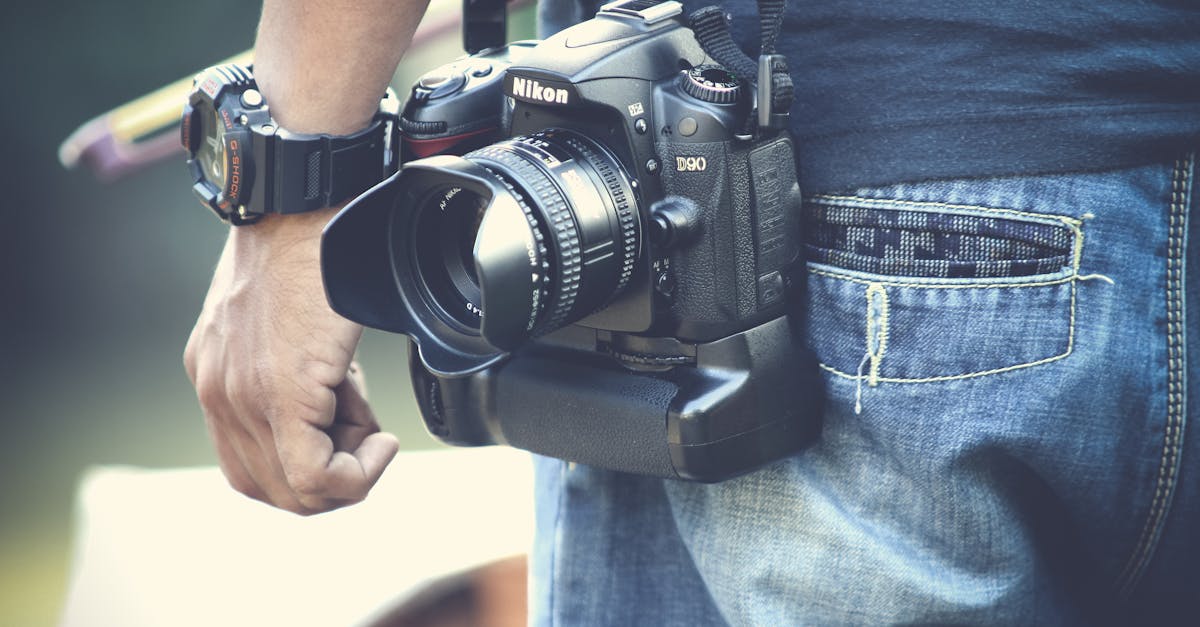How to Keep Off-Camera Flash On While Videoing on a DSLR
As a professional photographer, you understand the importance of perfect lighting. But when it comes to video recording, controlling lighting can be tricky, especially if you rely on your DSLR. In this guide, we will walk you through the detailed process of how to keep the off-camera flash on while videoing on a DSLR.
DSLR cameras are trusted by professionals around the world, but they come with their own set of challenges. One common frustration involves using an off-camera flash while recording video. This guide aims to provide you with step-by-step solutions and tips to achieve optimal lighting during video recording.

Why Use Off-Camera Flash?
Before diving into the technicalities, let us understand why using an off-camera flash is often the preferred choice for many videographers and photographers. Here are some key advantages:
- Enhanced Control: Having an off-camera flash allows better control over the direction and intensity of light.
- Creative Lighting: It opens up endless possibilities for creative lighting techniques, enhancing the overall look and feel of the video.
- Reduced Red-Eye: Since the flash is not directly in front of the subject, the chances of red-eye effect are minimized.

Setting Up Your DSLR for Off-Camera Flash
Setting up your DSLR camera for an off-camera flash requires some preparation. Here's a step-by-step guide:
1. Choosing the Right Equipment
To start, make sure you have the following equipment:
- DSLR camera with video recording capability
- External flash unit
- Flash trigger or wireless transmitter
- Flash stand or mount
Using reliable gear is crucial for consistent results. You can read more on choosing the right DSLR camera here.
2. Setting the Flash and Trigger
Firstly, attach the flash trigger to the hot shoe of your DSLR camera. Follow these steps:
- Ensure the camera and flash are turned off.
- Connect the flash trigger to the camera's hot shoe.
- Attach the external flash to the flash stand or mount.
- Turn on the flash and configure the settings as per your requirements.
3. Configuring Camera Settings
Adjust the camera settings to work harmoniously with the flash. Some key settings include:
- Manual Mode: Use manual mode for better control over exposure and lighting.
- ISO: Set a lower ISO to reduce noise.
- Shutter Speed: Ensure the shutter speed is compatible with the flash sync speed.
- Aperture: Adjust the aperture to control the depth of field.

Techniques for Using Off-Camera Flash in Videography
Using off-camera flash effectively requires more than just the right equipment. Here are some techniques you can use:
Bouncing the Flash
Bouncing the flash off a ceiling or wall can create softer, more diffused light, making it ideal for interviews or close-up shots.
Using Modifiers
Modifiers like softboxes, umbrellas, and diffusers can help control the quality of light, making it softer and more directional.
Backlighting
Creating a backlight effect can add depth and dimension to your video. Position the flash behind the subject to achieve this effect.

Potential Issues and Troubleshooting
While using an off-camera flash can greatly enhance your video, you might face some challenges. Here are common issues and their solutions:
Flash Not Firing
If your flash is not firing, check the following:
- Ensure the trigger is correctly attached and turned on.
- Check the flash batteries and replace if needed.
- Confirm the flash settings are correct.
Overexposure or Underexposure
Incorrect exposure can ruin your video. To avoid this:
- Adjust the flash power settings.
- Use a light meter to measure and adjust accurately.
Sync Issues
If your flash and camera are not syncing correctly:
- Check the shutter speed and adjust if necessary.
- Ensure the flash is set to the correct sync mode.
Advanced Techniques and Tools
For those looking to push the boundaries further, consider diving into advanced techniques:
High-Speed Sync (HSS)
High-Speed Sync allows you to use your flash at shutter speeds higher than the camera's native sync speed, perfect for outdoor shoots.
TTL Flash
TTL (Through-The-Lens) flash can automatically adjust the flash output based on the camera's metering, useful for dynamic shooting conditions.
Recommended Equipment and Resources
Here is some recommended equipment to help you get started:
FAQs
Q1. Can I use my built-in flash while videoing on a DSLR?
No, built-in flashes are not designed for continuous use required in videography. It is better to use an external flash unit.
Q2. What are the best flash triggers for DSLR video?
Some popular options include Godox, Yongnuo, and PocketWizard.
Q3. Is high-speed sync useful for video shooting?
High-Speed Sync is generally more useful in photography as it allows faster shutter speeds. In videography, standard sync settings are often sufficient.
As an Amazon Associate, I earn from qualifying purchases.

